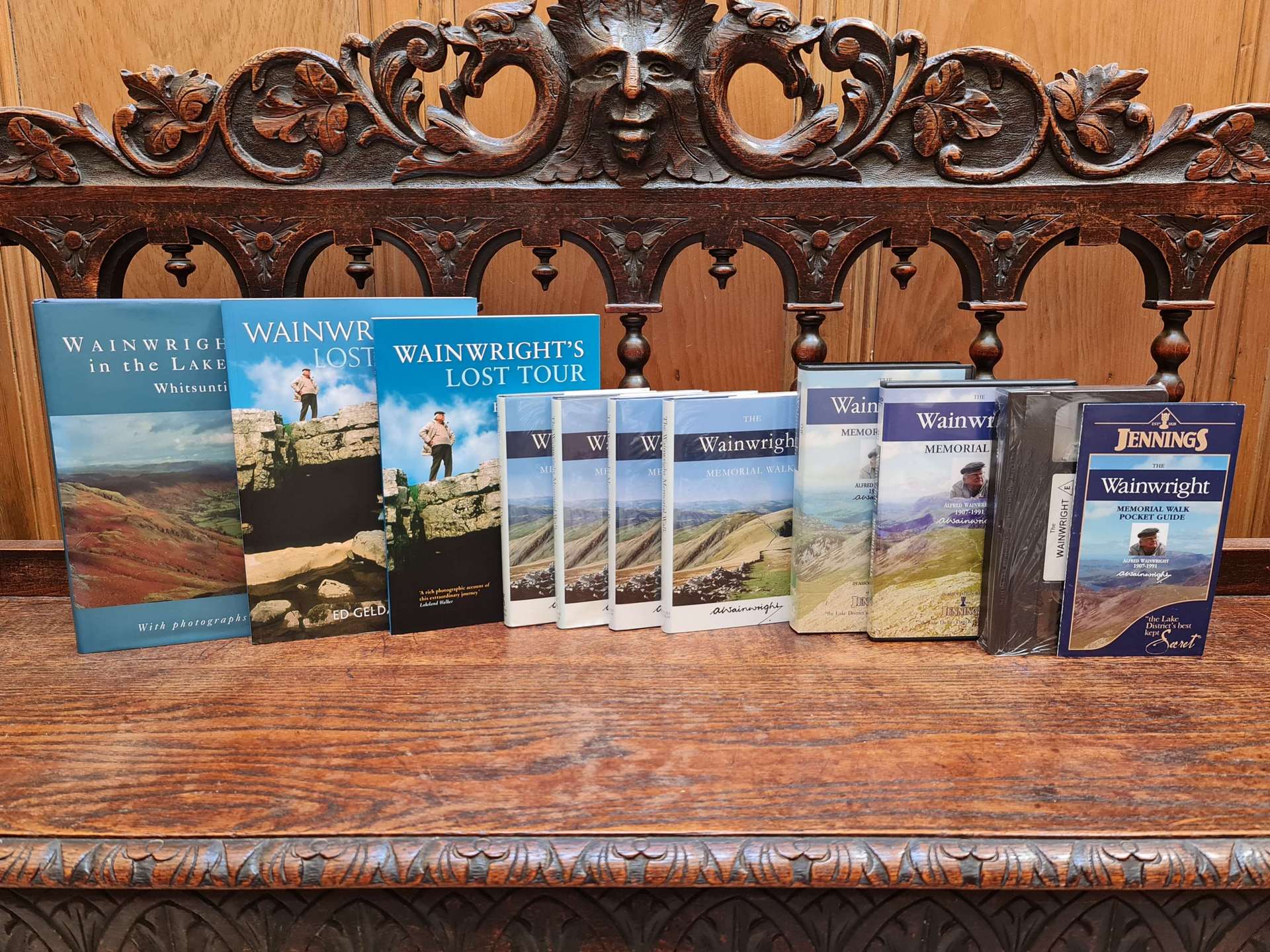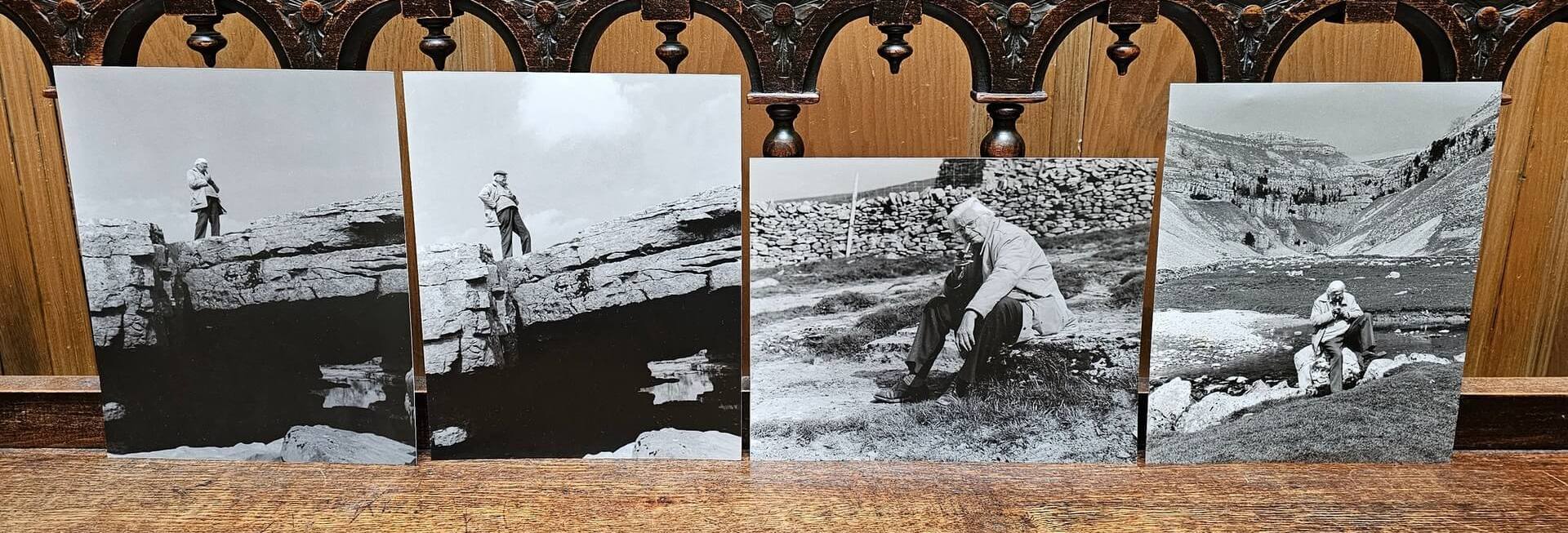Wainwright’s Tour in the Lake District
Article by Chris Butterfield
In 2021, the Whitsuntide season marked the 90th anniversary of Alfred Wainwright’s notable Lake District Tour in 1931, often referred to as the ‘Grand Tour.’ This journey held significant personal importance for Wainwright following a transformative experience in 1930. During this initial visit, Wainwright, alongside his cousin Eric Maudsley, ventured into the Lake District, arriving at Windermere on 7 June. Their first destination, Orrest Head, presented a stunning panoramic view that positively impacted Wainwright and his future.
Motivated by this pivotal experience, Wainwright returned to his home in Blackburn with a lingering memory of the Lake District’s beauty. This memory fueled his desire to embark on a more extensive exploration of the area. The subsequent trip, conceived as a comprehensive tour, aimed to encompass every lake, mountain, and valley within the district. This ambitious plan materialised into a challenging 102-mile trek, which Wainwright decided to undertake over six days.

Following months of thorough preparation, Alfred Wainwright shared his detailed plan for the Lake District expedition with his colleagues at the Blackburn Borough Treasurer’s office, who were also his chosen companions for the walking holiday. This group included Eric Maudsley, Jim Sharples, and Harry Driver. Wainwright had documented the trek itinerary on six foolscap sheets, outlining the route and specifics of the journey they were to embark on.
Interestingly, these original six sheets, which held significant historical and personal value, remained hidden from public knowledge for many years. They were only discovered after Wainwright’s death in January 1991. The sheets had been in the possession of Eric Maudsley, one of the walking companions and Wainwright’s colleague, who had safeguarded them for several decades. Maudsley’s stewardship of these documents until his death indicates the personal significance and cherished memories of the 1931 Lake District Tour, a journey that profoundly impacted Wainwright and his walking companions.
Wainwright’s original itinerary:
Day one: 23 May 1931, Windermere to Patterdale
Day two: 24 May 1931, Patterdale to Keswick
Day three: 25 May 1931, Keswick to Buttermere
Day four: 26 May 1931, Buttermere to Wasdale
Day five: 27 May 1931, Wasdale to Langdale
Day six: 28 May 1931, Langdale to Windermere
<<>>
Eric Maudsley’s tour account reveals an unfortunate start for the four young heroes. The driving rain on day one forced them to abandon most of their original planned route. As the day progressed, the weather, exhaustion, and the group’s lack of experience with high-level fell walking would begin to show. Shortcuts had to be made for three days to compensate for the relentless rain. The weather improved and raised everyone’s spirits on the final two days. The route could now be completed precisely to Wainwright’s original plan.
Wainwright was a perfectionist; perhaps he was disappointed with his performance. Reluctantly, he may have conceded that he had bitten off more than he could chew. Was this why he never spoke about the ill-fated tour later in life? Whatever the reasons, this was one event in his life that was never mentioned in his biographies.

Eric Maudsley’s account of the 1931 Lake District Tour reveals that the journey undertaken by Alfred Wainwright and his three companions, including Maudsley himself, Jim Sharples, and Harry Driver, commenced under challenging circumstances. Their ambitious adventure faced an immediate setback due to inclement weather. Heavy and persistent rain disrupted their plans on the first day, compelling them to deviate significantly from their intended route.
The adverse weather conditions and their inexperience in high-level fell walking took a toll on the group as the day wore on. Physical and mental strain became evident, necessitating adjustments to their original itinerary. To manage the situation, the group had to take shortcuts for the subsequent three days, adapting their journey to cope with the relentless rain.
Fortunately, the weather improved during the last two days of their trek, positively influencing the group’s morale. This change allowed them to follow Wainwright’s planned route closely, finally fulfilling the original vision of the tour.
Wainwright, known for his perfectionism, might have felt disappointed regarding the tour’s initial setbacks. It’s plausible that he perceived the need to modify their plans as a personal failing, possibly feeling that he had overestimated their capabilities. This introspection might explain why Wainwright seldom, if ever, discussed this particular tour later in life. It remained an unmentioned chapter in his life story, conspicuously absent from his biographies.

Ed Geldard contributed significantly to understanding Alfred Wainwright’s early adventures in the Lake District with his book, Wainwright’s Lost Tour, published in 2010. In this work, Geldard delves into the details of Wainwright’s original walk in 1931, providing insights and perspectives that shed new light on this lesser-known episode in Wainwright’s life.
Geldard’s analysis suggests that the weather was pivotal in the 1931 tour’s outcome. He posits that Wainwright and his companions’ journey could have succeeded if the weather conditions had been favourable.



